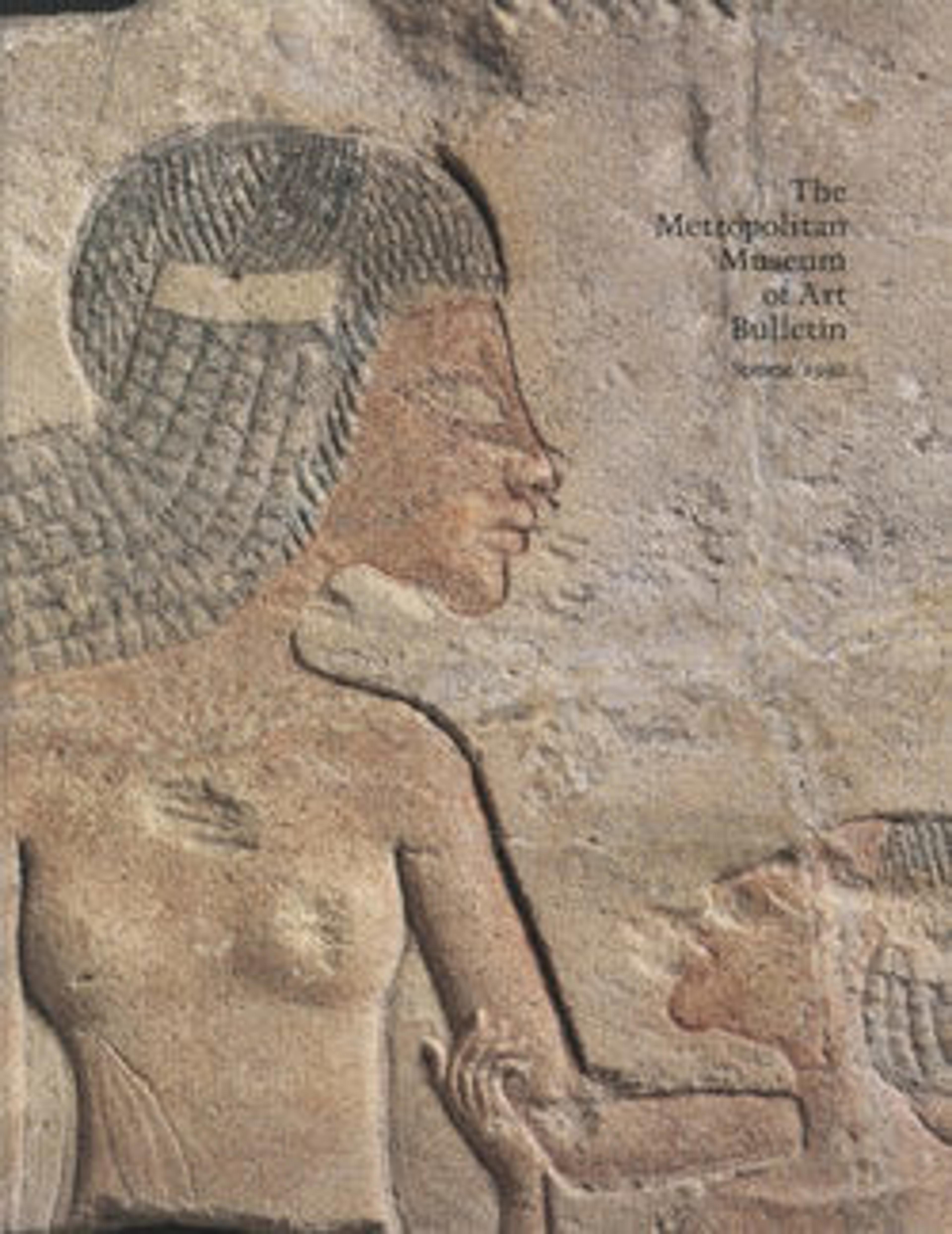Medallion with a seated deity and a male worshiper
The kings of Urartu ruled what is now eastern Turkey, Armenia, and northwestern Iran from their capital at Tushpa (modern Van, Turkey) during the early first millennium B.C. Urartian fortresses, strategically placed on high rock outcrops, dominated the landscape of their territories and protected the kingdom from their rivals, the Assyrians. Despite confrontations with the Assyrians, the Urartians also borrowed many images and iconographic elements from Assyrian art and made them their own.
This silver medallion, partially covered with gold foil, shows a deity seated on a throne supported by lions facing a male worshiper whose arms are raised in supplication or respect. Both the deity with horned headdress on a throne supported by animals and the worshiper figure are common Assyrian motifs; the long fringed garments are widespread in the ancient Near East. Here, the scene is set on a ground line of paired zigzag lines between pairs of parallel horizontal lines, a decorative pattern characteristic of Urartian medallions. Such medallions in silver, gold, and bronze are thought to be insignias of rank and authority and have been found at sites in both Armenia and Turkey.
This silver medallion, partially covered with gold foil, shows a deity seated on a throne supported by lions facing a male worshiper whose arms are raised in supplication or respect. Both the deity with horned headdress on a throne supported by animals and the worshiper figure are common Assyrian motifs; the long fringed garments are widespread in the ancient Near East. Here, the scene is set on a ground line of paired zigzag lines between pairs of parallel horizontal lines, a decorative pattern characteristic of Urartian medallions. Such medallions in silver, gold, and bronze are thought to be insignias of rank and authority and have been found at sites in both Armenia and Turkey.
Artwork Details
- Title: Medallion with a seated deity and a male worshiper
- Period: Iron Age III
- Date: ca. 8th–7th century BCE
- Geography: Urartu
- Culture: Urartian
- Medium: Silver, gold foil
- Dimensions: 2 3/8 × 2 3/8 × 1/16 in. (6.1 × 6.1 × 0.2 cm)
- Credit Line: Gift of Norbert Schimmel Trust, 1989
- Object Number: 1989.281.20
- Curatorial Department: Ancient West Asian Art
More Artwork
Research Resources
The Met provides unparalleled resources for research and welcomes an international community of students and scholars. The Met's Open Access API is where creators and researchers can connect to the The Met collection. Open Access data and public domain images are available for unrestricted commercial and noncommercial use without permission or fee.
To request images under copyright and other restrictions, please use this Image Request form.
Feedback
We continue to research and examine historical and cultural context for objects in The Met collection. If you have comments or questions about this object record, please contact us using the form below. The Museum looks forward to receiving your comments.
